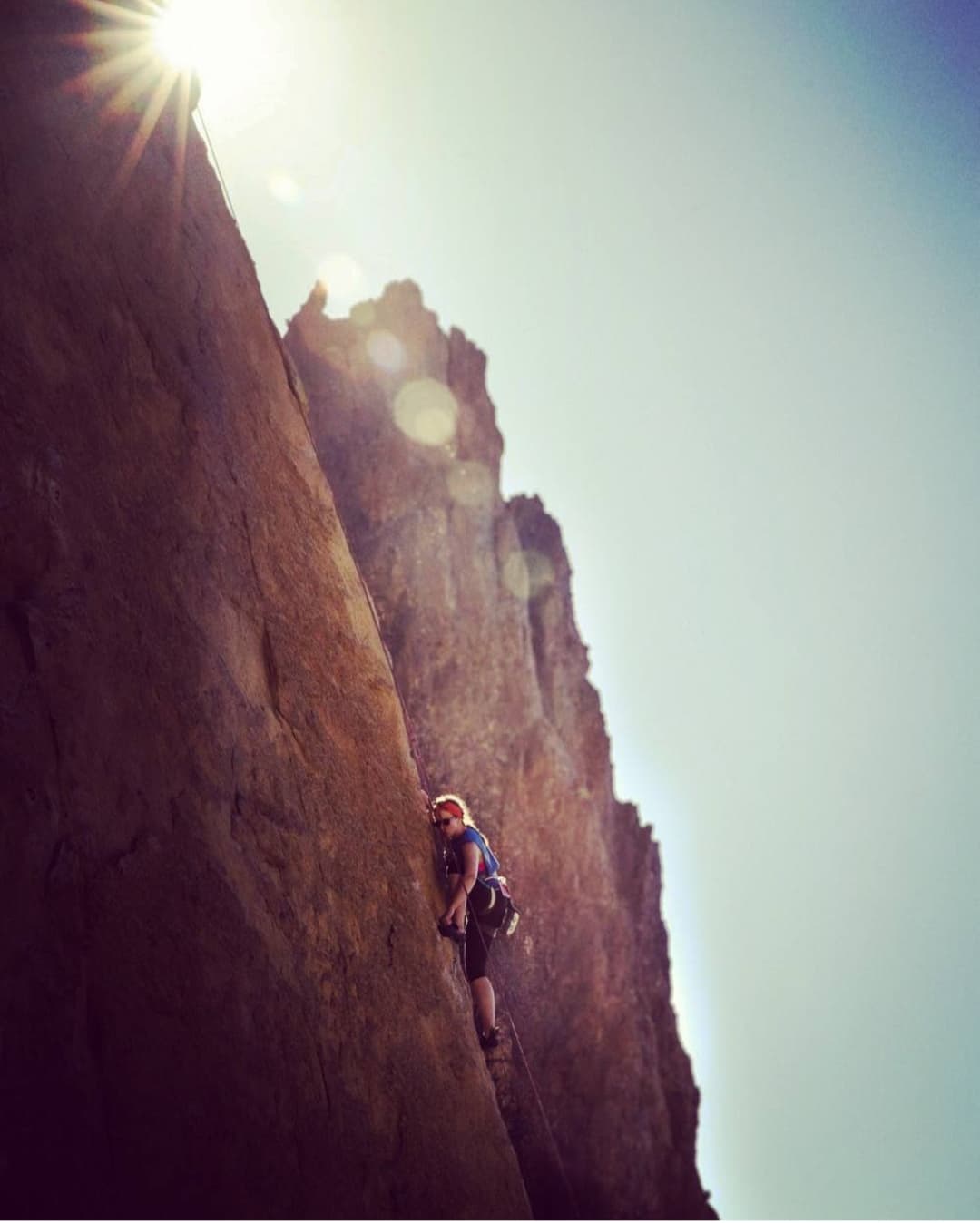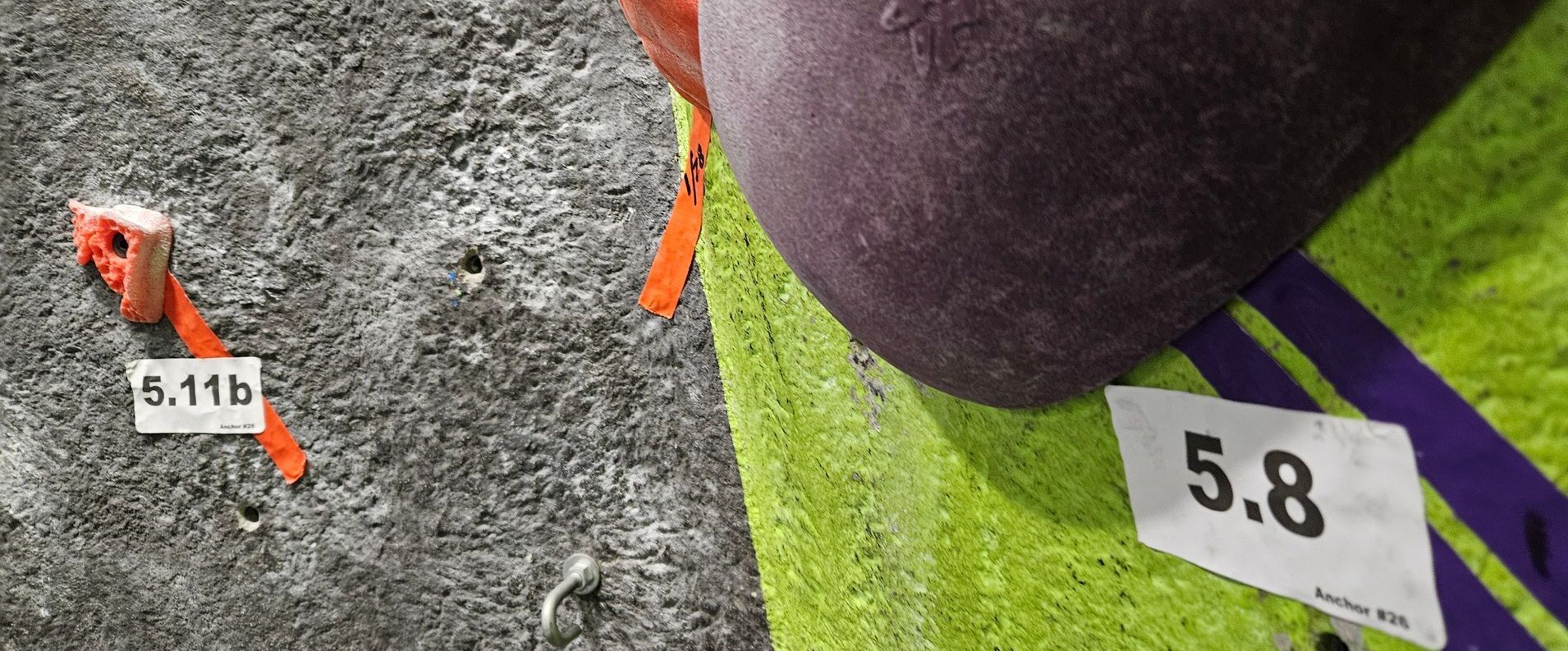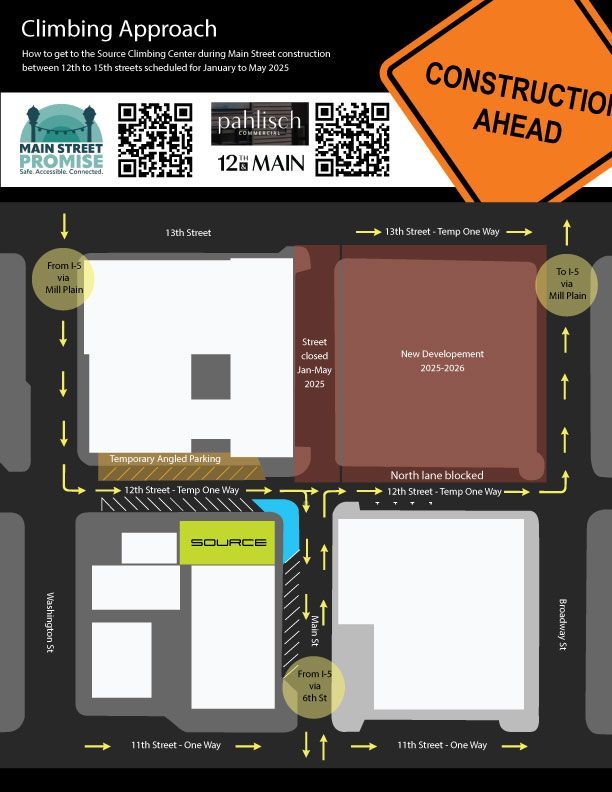May 25, 2020
Member Highlight: Katie Pikes
"Climbing will teach you things about yourself that you will have to work through to be able to get to that next big goal you have set for yourself. Enjoy it. Every step of the way.”

Katie is a Radiologic Technologist here in Vancouver, and climbing has held a very important role in her life. Today, we get to know her and learn some of the ways climbing has elevated her passion for the outdoors.. Some of you may remember her husband, OG Source crew member Kyle! The two of them got married last year at Smith Rock State Park. Read on to hear some sound advice on climbing...
How did you get into climbing/how long have you been climbing?
“I have been climbing for 8 years now. I was introduced to climbing through a friend who took me to the Source! It started out as just something new and fun to try out, nothing serious. Then I met Kyle, my now husband, and we ended up climbing together a lot…the rest is history haha.”
What is your favorite crag, route or climbing memory?
“ [My] favorite crag has to be Smith Rock (so far). My first outdoor climbing experience was there. We had the best guide (shout out to Derrick Peppers!) who took us around the park for 12 hours that day. That was the day that determined climbing was going to play a bigger role in my life than just a passing hobby.”
What does climbing mean to you?
“My relationship with climbing since that first outdoor trip to Smith Rock has grown and evolved tremendously. Climbing has brought me so much personal growth. Climbing gave me confidence in myself to try new things and push myself, physically and mentally. Climbing has also brought me closer to nature and my relationship with the outdoors has become much deeper because of it. I also gained all my current closest friends through climbing. Overall, I am extremely grateful to have climbing in my life.”
What piece of advice would you give to the younger climbers in our community?
“My advice would be this; climbing is what you make of it. It’s very much a give and take relationship. Whether you are in it to just have fun or you are in it to compete—the more work and patience you put into it, the more you get out of it. The key is to be patient with yourself. Climbing will teach you things about yourself that you will have to work through to be able to get to that next big goal you have set for yourself. Enjoy it. Every step of the way.”
Thank you so much Katie for sharing a bit of your climbing story with us! Check back every Monday for a new Member Highlight.

By Michael Lary
•
March 4, 2025
Most climbers are familiar with two grading systems in the US. The Yosemite Decimal System (YDS), and the V-Scale or “Hueco Scale”. For a basic overview of how the grades work, check out this article with Climbing Magazine . While these grading systems are widely used, they are subjective and have even evolved over time, so we often hear about the inconsistency climbers see between different climbing areas and gyms. This article will help explain our approach to using the YDS and V-Scale grades here at the Source. VIEW CHART First, some background… The Source was founded by climbers with a background in mostly outdoor climbing. Hanz and I have been climbing indoors and out since the mid-90’s, along with our Lead Setter, Joe. We continue to climb in and outdoors to keep a sense of grades. Yes, even I, Michael, have continued to climb outdoors with occasional visits to local crags and an annual trip to Colorado each spring. Our goal has been, and remains to be, aligning the Source with the grades we experience climbing outdoor locally and across the country. Who determines the Grade… The Lead Setter schedules a target grade. The goal is to maintain a ‘grade curve’ that both challenges and represents the climbers here at the Source. Once a route or problem is set, the grade is then determined through consensus of 2 or more setters. Setters will “forerun” the route or problem for both quality control and to refine the difficulty to match the grade. In some cases, competition routes as an example, the setters may spend as much time forerunning and refining the route as they do setting the holds. What does the grade mean? The grade of a climb should reflect the overall difficulty of the climb. We have the grades broken into 5 categories to give a sense of the likelihood of success (climbing without a fall or take) based on a climber's level of activity, fitness and climbing experience. They may not be able to complete every climb in a category, but should expect a high level of success with regular climbing over a 3 month period. New climbers should expect a high level of success on Beginner climbs (5.5 to 5.7). We consider “new” to mean limited activity or experience, typically less than 12 days of activity or climbing in last 12 months. Intermediate climbs (5.9 to 5.10c, VB to V0) should provide a high likelihood of success for people that are physically active, climb 20 or more days/year, or have a year or more active climbing People that are more physically active 2-3 days a week, climb 30+ days a year, or with 5+ years of experience may have a high level of success on A dvanced climbs (5.10d to 5.11c, V1 to V3) Expert level climbing (5.11d to 5.12c, V4 to V5) requires most athletes to train intentionally 2-3 days per week, often climbing 50+ days a year or having 10+ years of experience. Then there is Elite level climbing (5.12d to 5.13c, V6 or more) for climbers that train at a high level 3 or more days a week, typically climbing 100+ days a year or having 20+ years of experience. Of course, there are many other factors that may impact a climber’s level of success. Age, body-type, injuries, gravity-level (although not scientifically proven, some days it just feels like there's more gravity). How is the grade determined? Our setters consider five factors when establishing a grade: holds, terrain, movement, route finding, and physicality. The setters consider the holds by asking “ how easy is it to connect with the wall? ” Hands connect easily with fingers wrapped over a positive edge, while more difficult connections require different hand positions or more contact strength down through the wrist. Feet connect easily when there is a lot of surface area, while more difficult connections require more pressure on a smaller part of the shoe’s rubber. Terrain can be considered by asking “ how easily can the body stay balanced and relaxed on the wall? ”. A climber’s weight is naturally balanced over their feet on easier terrain, while weight is supported in our hands and core even when balanced on difficult terrain. How we change between positions on the wall determines the difficulty of movement . While most climbers can make the specific body movements or positions to reach to the next hold on intermediate terrain, many people cannot produce the strength and body tension necessary to hold positions and/or make movements on higher level climbing. Route finding considers “How easily can a climber identify the connection points, position and changes?” For example, beginner climbs might only require some awareness of climbing gym specific route markings and/or hold use, while expert climbs will certainly require planning ahead or trying different use of holds, volumes and wall features before succeeding. Lastly, we consider the physicality , or “how much bodily contact or activity is required to complete the climb?” Put simply, how does it feel to the setter overall. An intermediate level climb will feel like a 5.9-5.10c that our setters have experienced outdoors. While an elite level climb might feel… well, ask Joe or Hanz because I have never sent harder than 12d outdoor. It’s important to note that the number grades do not reflect the factors brought by the climber. Fitness, experience, risk tolerance, comfort with lead or top-rope, etc. For sake of consistency, the setters can only consider the conditions as they exist on the wall. Why, just why? Some of the FAQ’s. Why is that 5.9 so hard? I sometimes ask myself the same question… but then I think of Rubicon on a slab at Carver Bridge Cliff or the vertical Five Gallon Buckets at Smith, and I find that 40’ of indoor climbing took a similar amount of physical exertion when climbed well. Why is 5.12 so much easier at the ‘gym who shall not be named’? A couple possible reasons… Indoor climbing is now a sport on it’s own, and each facilities develops criteria based on their own users and experience. There are similar discrepancies between outdoor crags. Speaking from experience, 5.11 can feel different between Smith Rock, Indian Creek, and Rifle Mountain Park. Why do you think a V4 boulderer should be able to climb 5.12a/b? We don’t necessarily think that is the case… While V4 and 12a/b are aligned on the printed scale, most climbers do not balance their training between bouldering and route climbing in the same way. Take weight lifting as an example. Bench pressing 120lbs for 3 sets of 10 reps may be at my personal limit as well as doing a single press with 180lbs. This does not mean 140 and 180 are the same, but the overall difficulty may feel similar. All things considered, the system works pretty well While the actual difficulty and experience will vary, the numbers overall still provide a reliable context to climbers with every crag or gym you visit. There is beauty in the variety that climbing provides. It is an important to remember the grades are not a reflection of the CLIMBER, they are a reflection of the conditions of the CLIMB. There is no such thing as a “5.10 climber” or a “5.12 climber”. Someone that has red-pointed a hundred 5.12 climbs will still fall on a 5.10 sometime, and a boulderer that can throw down on the latest V9 may struggle on a classic 5.11. So don’t let that “techy” 5.9 bug you, try something new on that “reachy” 5.10, and don’t hesitate to string a few moves together on that “intimidating” 5.11. CLIMB ON! Happy climbing!

